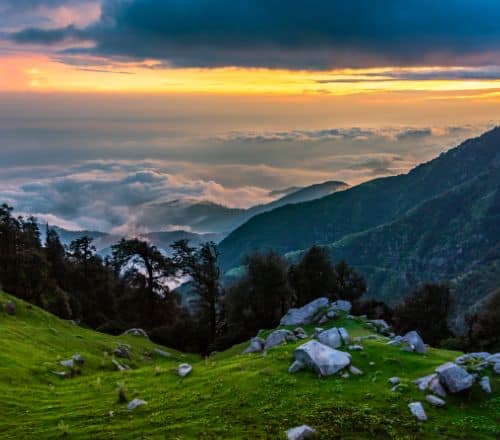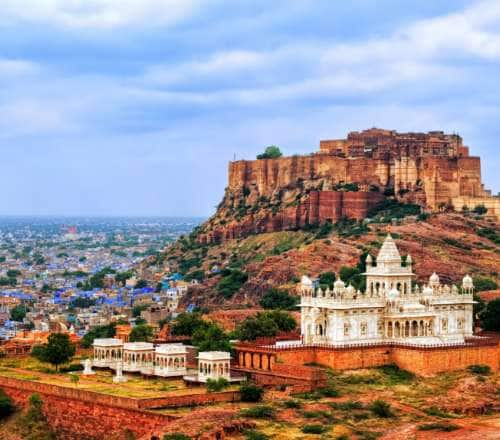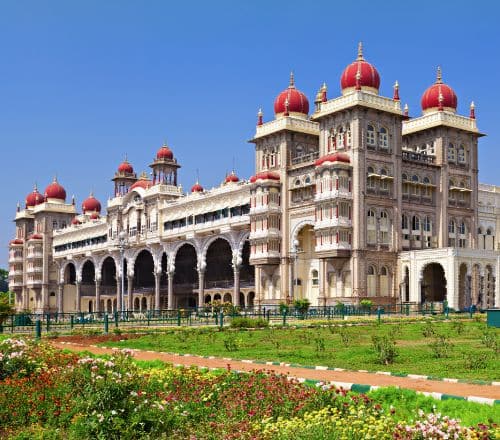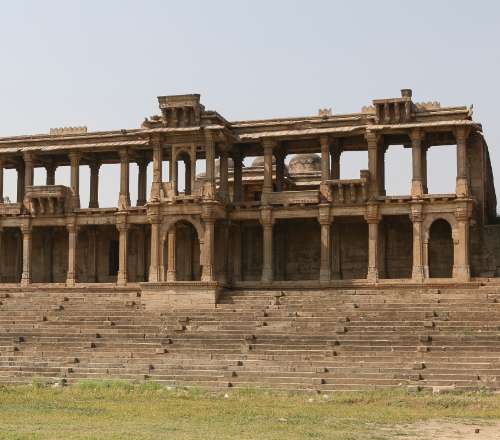Stay logged in to proceed with bookings, orders and offers.
On changing the terminal, you will loose items in your cart. Are you sure you want to change your terminal?
Assam is a melting pot of age-old cultures and the land of Gamucha and Xorai
The tribal communities native to Assam add to the state's vibrant culture. Naturally, the heritage of these communities features in the state's kaleidoscope of festivals. The soil, lush forests, and rich tea gardens of Assam are integral to the identities of the Kachari, Bodo, Karbi, Rabha, and Miri communities dotting the scenic landscapes of Assam.
Most tribes have native languages, even as Assamese remains the official language. Most Asomiya people are Vaishnavas who disapprove of idol worship. They practise faith by singing paeans to Lord Vishnu through Naamkirtana (taking the names of the Lord in a rhythmic tone) and Leelakirtana (a retelling of the stories of the Lord's life). Other religions, such as Christianity, Buddhism, Islam, and Hinduism, are practised here.
Okay, you are in for a humongous, mind-bedazzling surprise (it doesn't involve any pranks on you). Be ready for a 'mindsplosion' as you learn that the people of Assam link their ethnic lineage to diverse races like Aryan, Indo-Burmese, Mongoloid, and Indo-Iranian. Assamese culture is woven around a tapestry of customs from all groups. Despite having mixed origins, each tribe in Assam is unique in its culture, festival, tradition, attire, and way of life.
Read More
Read Less
The Asomiya people are known for their hospitality. They warmly welcome guests with Gamucha and Xorai. When a guest crosses the threshold of the house, the Gamucha is wrapped around their neck as a gesture of felicitation, and Xorai, a bell metal tray, in which offerings of Tamul paan made of areca nut and betel leaves with sweetener, is offered.
Guests are also offered saah or tea as refreshments with sweets. Being home to some of the largest tea estates in India, tea is an inseparable part of Assamese cuisine, and spiced tea, black tea, lemon tea, milk tea, green and so on are served to guests.
The classic dance form Sattriya draws inspiration from mythological stories. While some Assamese traditions and ceremonies declined, Sattriya remained prominent throughout. Saint Srimanta Sankardeva founded this dance tradition in Assam in the 15th century.
Recognised as one of India's eight classical dance forms, the themes of Sattriya Nritya are related to the Hindu pantheon of Gods from epics like the Mahabharata and the Ramayana. It was established as a tradition for the devotees of Ekasarana dharma, the religion propagated by Sankaradeva, now practised worldwide.
The mudras and padas of the dance form captivate the mind through nritta, a fast, rhythmic solo dance; nritya, storytelling through expressions and body movements; and natya, a dramatic performative technique.
You will hardly find a person who hasn't heard of Bihu – the popular Assamese folk dance. Quick hand movements and brisk dance steps characterise this unique dance form. Musical instruments like pepa, banhi, dogana, etc, accompany this dance.
The first recorded performance of this dance is attributed to when Rudra Singh, the Ahom king, invited Bihu dancers to Rongali Bihu in 1964. This state festival is celebrated by all Asomiya people irrespective of religion, caste or creed.
Assamese ornaments are integral to Assamese culture and are usually made of Kesha Xoon, which means raw gold in Assamese. These handmade ornaments feature representations of the region's flora and fauna, such as peacocks, lotuses, and sunflowers, as well as musical instruments like the dhol.
Traditional Assamese jewellery designs are minimal and decorated with colourful gemstones. Usually, black, green, and red colours dominate the ornaments and traditional dresses of Assamese tribal communities.
Bihu is not just a dance form but a larger-than-life festival that gives Assam a distinct identity against the backdrop of the nation’s diverse pool of cultures. While the Rongali/Bohag Bihu celebrates the youthfulness of nature in spring, the Bhogali/Magh Bihu is a festival of food observed in January at the end of winter. It marks the end of another successful harvesting season and is celebrated with much aplomb.
On the eve of the festival, colloquially called Uruka, hays of the harvest are gathered to build temporary bonfires. Food is prepared throughout the day for community feasting.
The traditional breakfast on the day of Magh Bihu is a quintessential jalpaan comprising chira or flattened rice, akhoi or puffed rice, bora saul and kumol saul – varieties of glutinous rice mixed with jaggery and fresh curd (the latter made of cow and buffalo milk).
The communities spend the evening gathered around the bonfires, also called meji, with people singing, dancing, exchanging stories, and playing games. Some villages host recreation games like buffalo fighting and cock fighting. The following morning, the main meji, built with bamboo and wood, is burnt. Pithas or rice cakes are thrown into the fire as offerings to the God of fire as a gratitude for the past season and blessings for the next.
Laddoos are a popular sweet exchanged during this festival. Laskar laddoos are prepared with grated coconut, while the Tilor Laru variety is prepared with roasted sesame seeds and gur.
Jonbeel Mela of Assam has kept alive the medieval tradition of the barter system. The Tiwa tribe is given charge of organising the mela. Numerous hill tribes from Assam and neighbouring states come together to exchange products from the harvest, garments, and household items.
The three-day fair takes place on the historical ground of Dayang Belguri at Jonbeel, 3 km from the town of Jagiroad in Morigaon District. The fair, which takes place during the Magh Bihu week, was set up by the Ahom kings to maintain good relations between tribal communities of Assam.
Still, much remains to be explored in Assam. For instance, Assam is the birthplace of the fearless soldier Lachit Borphukan who fought selflessly in the Battle of Saraighat against the Mughals, a fact known only to a few. The unsung saga of Assam's culture and history needs to resonate loudly. What better way to do it than inviting tourists to experience an Assamese cultural extravaganza?





The Adani One expressly disclaims all liability, direct and indirect, in respect to actions taken or not taken based on any or all the contents of this Blog. The Blog is an opinion of the contributor based on the collation of data from various sources and is provided only for information purpose. Adani One does not canvass, advertise, solicit, invite or induct for any product, merchandise, information, brand or any other materials mentioned in the Blog, nor does it obtain any monetary benefit from the same. Reader is advised to read and apply his/her intellect and discretion in this regard. Any Intellectual Property mentioned in this blog belongs to the rightful owner. We do not intent to claim any interest over the same.